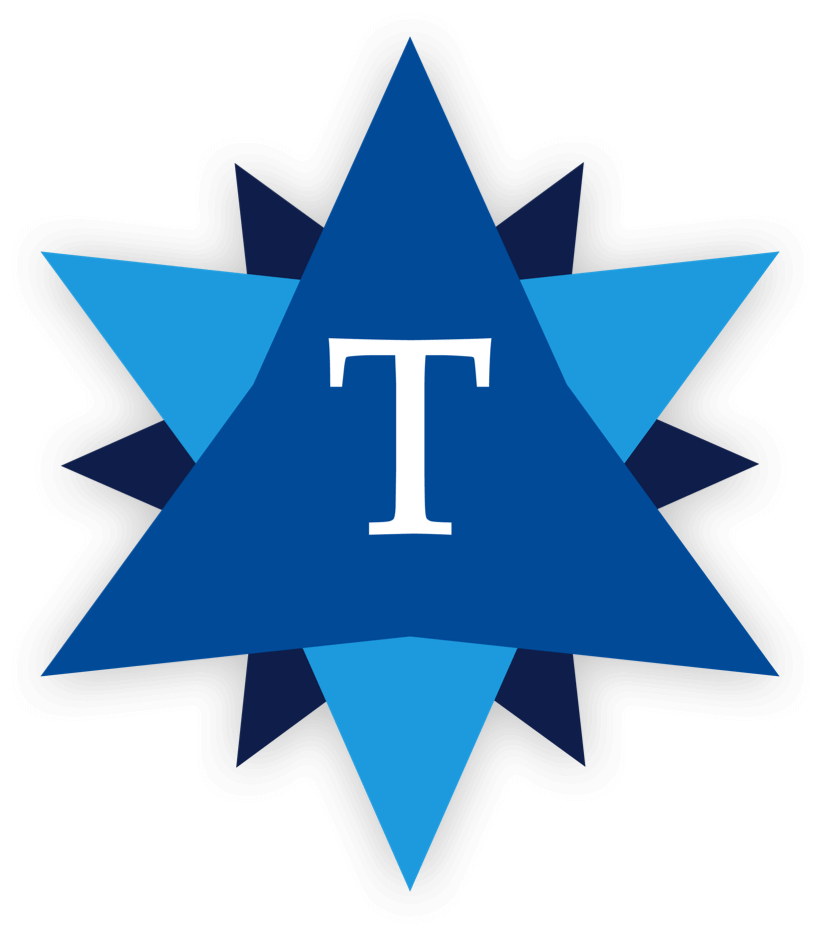See. Feel. Change. The Evolution of Change Management.
Guest Author

As someone who’s implemented new technologies in higher ed for more than a decade, my on-going joke is that I use my public relations degree daily trying to convince people I’m making their lives easier with technology, not harder! As a fast-talking, multi-tasking technologist who embraces change, my lessons learned over the years have been around networking, user adoption, and change management when rolling out a new process or product. When change management is boiled down, it’s a critical piece to any implementation puzzle. It’s the ‘people’ piece without which any major product implementation and process adjustment would fail.

Prosci was founded in 1994 by a former engineer and program manager, Jeff Hiatt, who continuously noticed inconsistencies in the success of projects that seemingly had similar technical solutions and project management. Hiatt discovered the key to success was the people side. Since its founding, Prosci has continued to ask questions about how to effectively help people embrace and adopt change, with Prosci’s best practices research being the largest body of knowledge on the subject.
I feel that change management is similar to project management in that you either have the knack for it, or you don’t. Project management at its core means that you are organized and communicative. Change management means you can read people and adjust your approach accordingly. However, it’s risky to boil these two complex practices down to simplistic sentences like the above because it implies that people, as a whole, are easy to read, communicate and work with, and anyone who’s had a tough colleague to work with can attest to the contrary.

Prosci has a great diagram that aligns the people side of change with the technical components of a project. I find this easy to use because I can relate with the bottom axis as well as the top. What’s critical to emphasize is that although this is a guideline to change, every person is different and will track along the phases of change at a different pace.
For these reasons, I also appreciate Gartner’s Hype Cycle, because it takes the project management components out of the diagram. The Gartner Hype Cycle provides a graphic representation of the maturity and adoption of technologies and applications and how they will evolve.

I have the most experience in implementing Salesforce as a CRM in higher education, so I’ll apply the Gartner Hype Cycle as it may pertain to a phase of my Salesforce implementation.
Technology Trigger: This occurs when we announce we are going to implement a new product off of the Salesforce AppExchange to help our users solve a problem they’ve been asking us to solve.
Peak of Inflated Expectations: This occurs when we demonstrate the product being successfully used at another institution and take specific requirements from our users on how they’ll utilize the solution. In a requirements session, nothing is off of the table; they can ask for the moon. I use the MoSCoW method because I feel that my users relate best with it so that they know nothing is off of the table, but if we explicitly categorize something from the get-go in the ‘W’ section, it’s not going to happen—at least not in an early phase. Depending on if you’re a pessimist or an optimist, that ‘W’ either stands for ‘Won’t Have’ or ‘Wish to Have.’
Trough of Disillusionment: This is usually around ‘go live.’ There are so many new things to learn, and I’m throwing a lot of new terms at the users. At this point, the users cannot see the light at the end of the tunnel, and they have blinders on, only seeing how much extra work they’re going to have to do to learn this new system, not how efficient they’ll be once they’re successfully onboarded.
THIS IS WHERE CHANGE MANAGEMENT BECOMES CRITICAL. You will not get to the Slope of Enlightenment and ultimately the Plateau of Productivity as an individual or team if change management is not present.
Slope of Enlightenment: Most end-users will travel through the first three phases together, but the last two phases are where institutional knowledge come into play, along with individual’s learning and communication preferences and ultimately their personalities. Old habits die hard.
One of my preferred professional development books is Switch: How to Change Things When Change is Hard. Like the title states, it addresses how to change (personally, professionally, socially, environmentally, etc.) when change is hard. I’ve adopted this book as my change management manual. In an effort to save you some time if you haven’t read it, here is a great “Cliff’s Notes” version published by Pennsylvania State’s Sustainability department.
In the book, it describes how change is most effective when assumptions are minimal, there are few unknowns, and both the logical and empathetic parts of our brain are being addressed. In previous decades, change management was approached from only the logical side of the brain: “analyze, think, change.” In reality, that sequence of change does not work. Instead, “see, feel, change” is much more successful to guide users through their path of adoption as they’re presented with evidence that makes them feel the desire to change, adopt and evolve.
How do I get my users to their slope of enlightenment?
SEE: Lots of user acceptance testing (UAT), how-to videos, quick reference guides with hands-on practices and hands-on training for Go Live.
FEEL: Dashboards have been my success in getting people to believe that my hassling and hounding them to get data in the system really does pay off when they’re able to produce never-before-seen metrics and data points with hard facts instead of educated (or, not-so-educated) guesses.
CHANGE: Once the snowball starts rolling, make yourself available to listen to all of the amazing—and sometimes really ‘pie-in-the-sky’—requests your users start to bring you. Don’t brush them off or dismiss them because that will undercut their level of excitement and potentially negatively affect their utilization of the system.
Plateau of Productivity: Here we are. We’re live. Most users are seeing efficiencies coming out of the new solution. It’s important to reiterate that support does not stop at ‘go live.’ In fact, that’s when it starts. On-going support for your users, new and veteran, as they navigate their way through the different stages of acceptance of a new system is critical to success.

User adoption reminds me a lot of raising children: There’s no magic formula and what works is different for everyone (and may even vary from day to day!). I’ve found both in raising children and user adoption that it’s a fine balance between the top/down (stick) and the bottom/up (carrot) approach.
Below are a few quick wins I have found successful to guide all of your users to the promised land of productivity with the implementation of Salesforce.
Chatter: Chatter is powerful. It typically doesn’t have a great initial adoption rate because it’s one more thing to learn; it’s a ‘social’ tool, etc. However, I’ve driven adoption by posting weekly tips, tricks, and reminders. I’ll even throw a trivia question in the mix and offer some Salesforce swag for the first person to answer correctly. Also, when someone emails me with a one-off question or request, but the response will benefit multiple users, I mention the requestor via Chatter within their user group and include my response, so users see that it eliminates back and forth emailing and is in one, centralized location for future reference. We use topics (hashtags) so that users know the criticality of what we’ve posted: #CriticalUpdate, #FYI, #SeekingInput, #JustForFun.
“Snackforce:” When we went live with our first phase, we wanted a way to stay in front of our users and keep Salesforce on their front burner, but we didn’t want to mandate another regularly-scheduled meeting. We wanted to be proactive, not reactive, which led to the inception of “Snackforce.” It’s an optional, monthly, informal, come-and-go one hour session where at least one Salesforce technologist is available during lunch. Users bring their lunch, and we provide a dessert. It’s in the same location at the same time, and we have Salesforce pulled up. We work through questions, problems, concerns, and requests in real-time. It seems to be such a simple, straight-forward concept, but it’s been wildly successful.
Walk the Halls: If you’re in a location where you can easily access your users, physically, then walk the halls! There’s no better way to get organic, impromptu feedback:
“Oh, Joanna, good to see you! You know, I’ve been having this one issue with my cases for the last few days, but I’ve just been so busy…Can you help me?”
Why, yes, yes I can.
And, if you’re on an IT Service Management tool, like we are, there’s no better way to get some First Response Resolutions!
I’ve often wondered if change management had a sexier name perhaps it’d get the attention it deserves in every project. For example, I’m currently reading a book that I bought solely based on the title, Radical Candor. That caught my attention! Plus, Amazon knows me like a book (pun intended) and recommended I take a look at it. Touché, Amazon. More on the book and how awesome it is in a future piece, but my point is, the term in itself demands your attention, whereas change management gets lost in the land of ‘management’ terms and titles and the term “change” is unfortunately already filled with undertones of fear and the unknown.
Therefore, I’ve started advocating that we start looking for some synonyms for change: innovate, adapt, transform, diversify—so many to choose from! And, although I am a ‘manager’ in my title, am I solely responsible for the transformation (see what I did there?) of my end-users in a project? No. I’m their partner, their advisor, their coach.
You may think this is my PR kicking in again, but I think it’s really important for the adopters of new technology, the end-users, to understand what everyone’s role is, and I’d love to see change managers’ roles become more positive. We are innovation agents here to insure everyone’s success.
And, with that, Joanna Iturbe, Innovation Agent 007, signing off.

The views and opinions expressed in this article are those of the author and do not necessarily reflect the official policy or position of The Tambellini Group. To express your views in this forum, please contact Katelyn Ilkani, Vice President, Client Services and Cybersecurity Research, The Tambellini Group.
Categories
Share Article:

Other Posts From this Author:
The views and opinions expressed in this article are those of the author and do not necessarily reflect the official policy or position of the Tambellini Group. To become a Top of Mind guest author, please contact us.
© Copyright 2025, The Tambellini Group. All Rights Reserved.